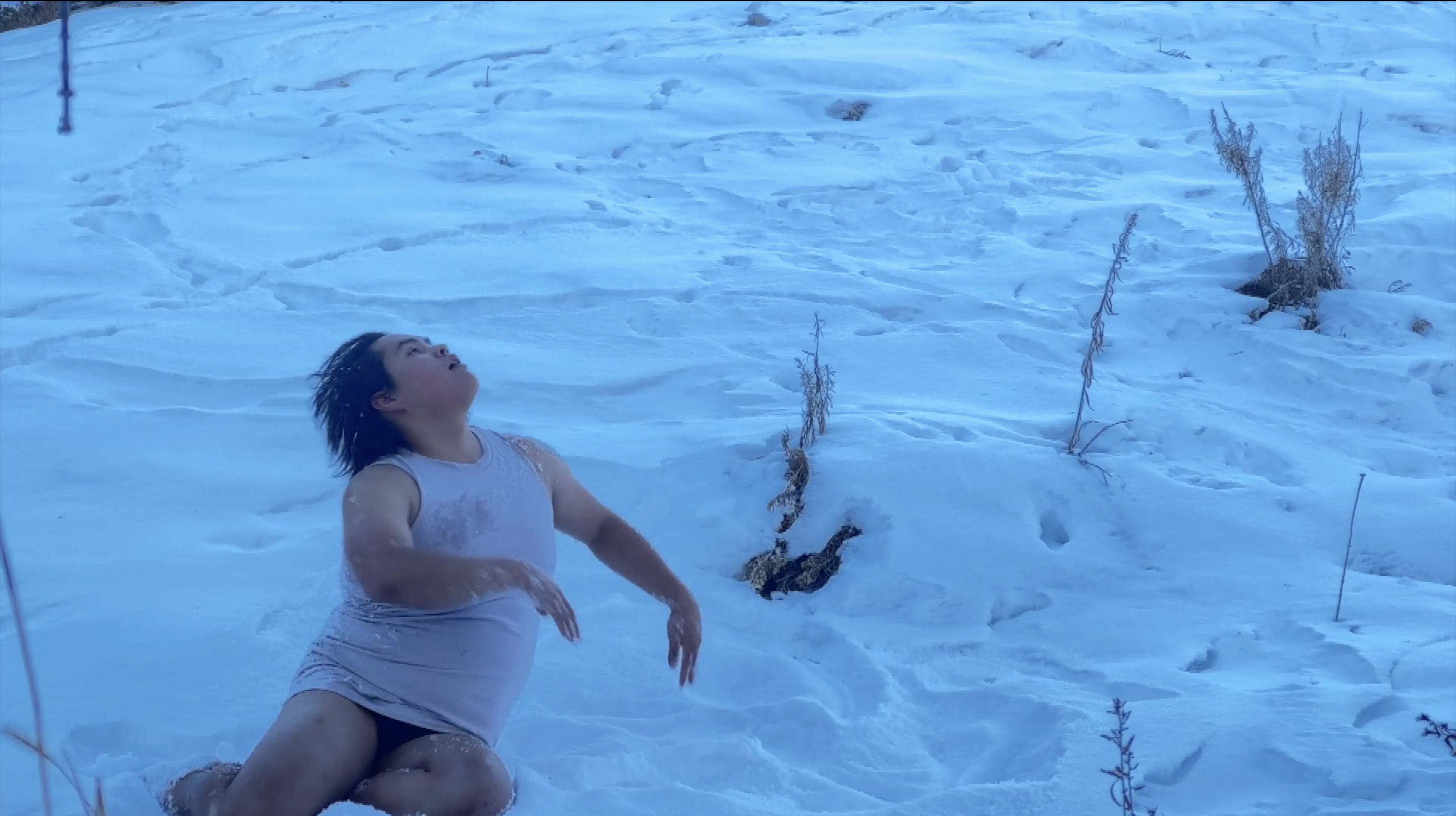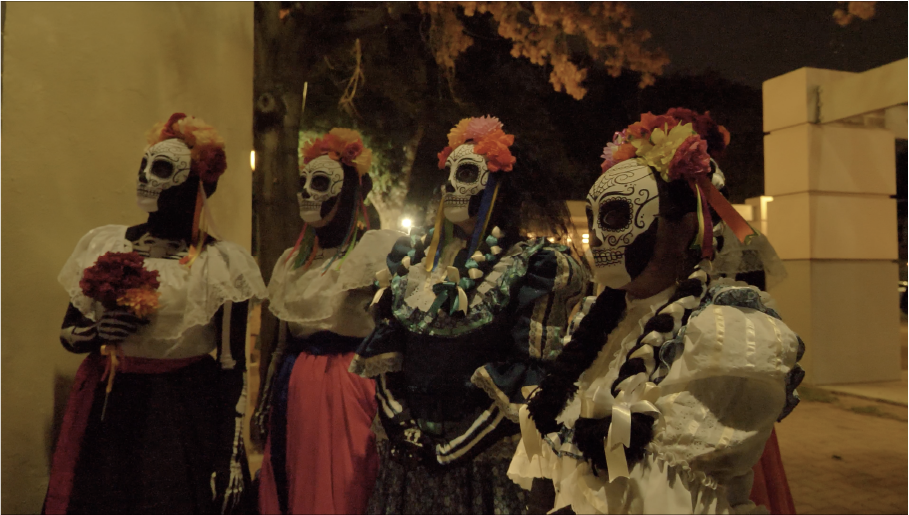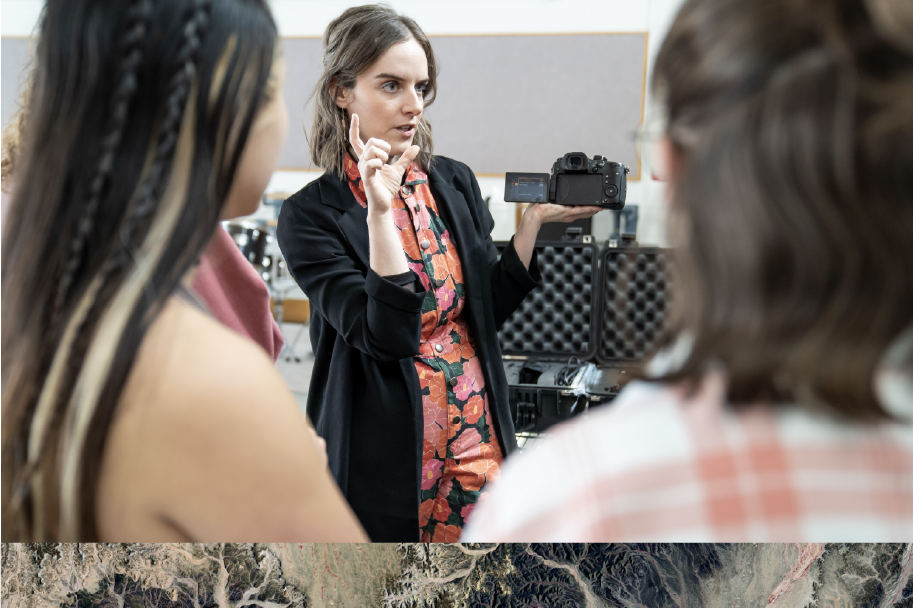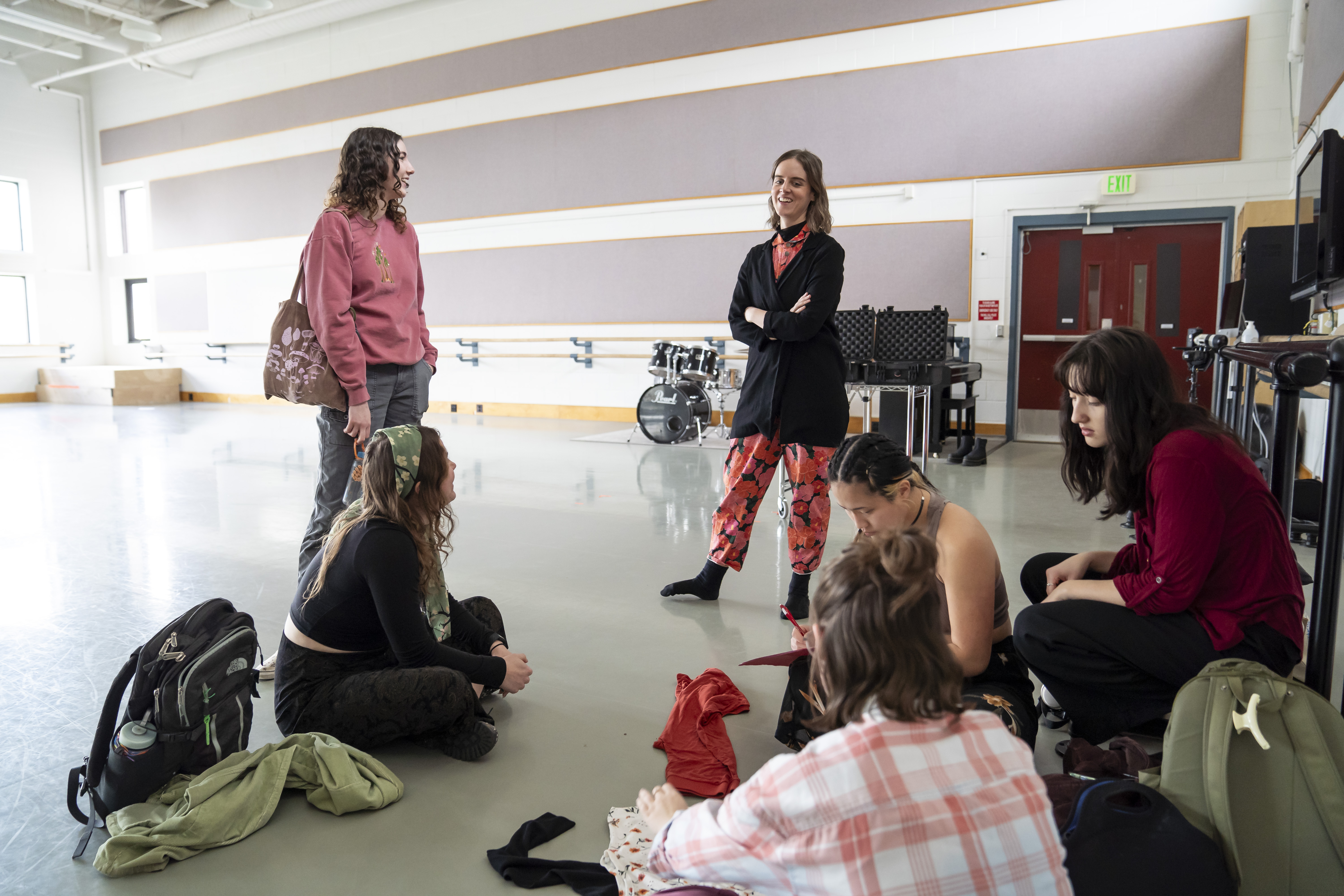Irishia Hubbard. Photo: Todd Collins Photography
Dancer & filmmaker Irishia Hubbard in a purple outfit arching back dramatically with her back arm outstretched.
WRITTEN BY MERRITT MECHAM
In separate panes across the screen, light filters through leaves, a man translates voiceover into sign language, and dancers bend amidst the green of the forest.
These are the opening images in “One + One Make Three,” a film by dance ensemble Kinetic Light, which showed at this year’s Screendance Cultural Tour — a film festival in collaboration with the Screendance Program at the U’s School of Dance and the Salt Lake Film Society (SLFS). The 2024 festival was held April 8-11 at the Broadway Centre Cinemas, and featured work by U alumni who are continuing the great tradition of screendance at the U.
The festival — at first called the International Dance for Camera Festival and Workshop — was founded by Distinguished Professor Ellen Bromberg in 1999. It has been held on a bi-annual basis and has featured artists and scholars from around the world. After a brief hiatus following COVID, the Screendance Cultural Tour returned for the first time since Bromberg’s retirement. The 2024 Screendance Cultural Tour, curated by U Assistant Professor Kymberly McDaniel, featured programs focused on personal narratives, culture, and identity that emphasize dance beyond the stage.

Devin Ettcity in her film “My Fractured Masculine Body, My Female Indigenous Soul” Filmmaker Devin Ettcity wearing a tank dress and falling into snow-covered grass.

Still from Roxanne Gray’s screendance entitled “Un Poquito”
Four women dressed in ornate dresses and skull masks.

“What I brought to the festival is an experimental film, personal non-fiction curation focus,” said McDaniel. “The programs are rooted in sharing personal stories of the body or movement on screen, often using voice, text, interviews, and movement as vehicles for storytelling.”
Across the seven programs, there were films from Ireland, the UK, Japan, Korea, Belgium, French Guiana, China, Mexico, Canada, and the US. They were categorized by theme, such as “The Body as Archive,” “Rhythms of Resistance,” and “Disability Dance Shorts,” and feature many films by “independent and/or DIY/low budget artists,” said McDaniel.
Indeed, McDaniel’s view of Screendance, and dance in general, is more expansive than many viewers may be expecting. This was perhaps most obvious in the programming surrounding disability. “Body diversity and disability can, and should be, two [concepts] associated with everyday movement and dance,” said McDaniel. “I am a person who identifies with non-visible disabilities, and I am an active member of disability communities. As a curator, it is a natural choice the program would reflect the inclusivity inherent in our field, world, and lives.”
In fact, McDaniel hoped the programming encouraged viewers to think of themselves as involved in dance as well: “If dance is about moving bodies, choreographing pathways, and creating relationships between people, the environment, and time — don’t we do this in our everyday life (even if you don’t consider yourself a dancer)?”

Kymberly McDaniel teaching a Screendance Class. Photo: University Marketing & Communications
McDaniel holds a camera and gestures. Two students look on, their backs to the camera.

If, in dance, the body is the means of communication, what does this mean for people whose bodies do not have the range of abilities traditionally associated with dance, or whose bodies aren’t immediately recognized as a dancer?
Filmmaker and U Dance MFA student Roxanne Gray explores these concepts in her film “Un Poquito,” an excerpt of which was shown in the Cultural Tour. “‘Un Poquito’ is a documentary short that follows my mother as she prepares for a folklórico dance performance in San Antonio, TX,” said Gray. “This particular project addressed aging and body diversity in an important way. My mother, in her 60s, is still dancing fully and completely. I enjoyed filming her dance class, full of aging women embracing movement to express themselves and their culture through their bodies.”
“I believe filmmaking offers dancers a voice and method of storytelling that is not always valued in Western dance culture,” said McDaniel. “Traditional choreography uses bodies to move intentionally across time and space — is the video frame not a performance space? Can text be choreographed?”
This more expansive view of choreography is part of the reason Gray has embraced the art form. “I enjoy screendance projects because they involve so many layers of ‘choreography.’ I am considering the choreography of movement, as well as the choreography of camera, editing, sound, lighting, etc.,” Gray said. “Screendance allows you to capture ephemeral art in a concrete form. These dance performances and explorations only exist in the moment; but screendance allows you to capture, manipulate, and play beyond that moment.”
All in all, the Screendance Cultural Tour was an interdisciplinary, community-bridging event, featuring cinematic investigations between moving body and moving image. “It was a fantastic experience!” said Gray. “I connected with many filmmakers and witnessed my work projected on the big screen.” With such an expansive event, the festival is an exciting continuation of the legacy of screendance at the U. ■








